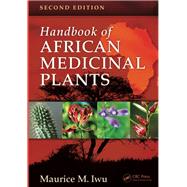Handbook of African Medicinal Plants, Second Edition

Handbook of African Medicinal Plants, Second Edition
- ISBN 13:
9781466571976
- ISBN 10:
1466571977
- Edition: 2nd
- Format: Hardcover
- Copyright: 02/04/2014
- Publisher: CRC Press
New From $184.80
Sorry, this item is currently unavailable on Knetbooks.com
List Price $186.66 Save $1.86
New
$184.80
Print on Demand: 2-4 Weeks. This item cannot be cancelled or returned.
We Buy This Book Back!
Included with your book
Free Shipping On Every Order
Note: Supplemental materials are not guaranteed with Rental or Used book purchases.
Extend or Purchase Your Rental at Any Time
Need to keep your rental past your due date? At any time before your due date you can extend or purchase your rental through your account.
Summary
Handbook of African Medicinal Plants provides a comprehensive review of over 1,000 species of plants employed in indigenous African medicine. It gives a concise description of the materia medica of an enormous and extensively varied continent, with well over 2,000 distinct tribes and several distinct floras. A detailed pharmacognostical profile of the major herbs is presented, including the common name, synonyms, African names, habitat and distribution, medicinal uses, chemical constituents, and published pharmacologic activity. This extensive catalog of plants is presented both in alphabetic order and according to family. References are cited from over 600 publications, and photographs and sketches illustrate many of the plants.The book also provides an introduction to African cosmology and beliefs as they relate to healing and the use of herbs. Handbook of African Medicinal Plants is an invaluable, practical desk reference that should be on the bookshelf of every pharmacognosist, ethnobiologist, botanist, ecologist, phytochemist, pharmacologist, and scientist interested in tropical plant utilization as a tool for the conservation of biodiversity and as a source of new drug leads.








